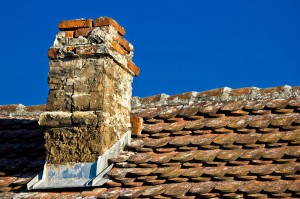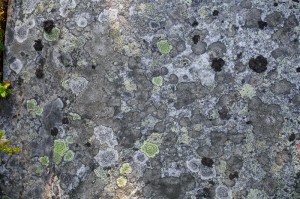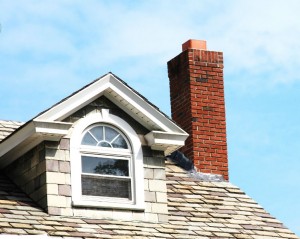by Billy Sweet | Dec 31, 2014 | Neglecting Chimney Maintenance
At first glance, chimneys seem very robust. They live outside all year, exposed to the elements, and can withstand hundreds of degrees worth of heat, fire after fire. Despite all of this, however, chimneys do need some regular care to keep up with these high demands. Industry experts strongly recommend having the chimney swept and inspected at least once every year and for good reason. Failure to keep up with chimney maintenance can have some devastating consequences.

For wood burning fireplaces and stoves, the chimney will contain a buildup of a material called creosote. This black, tarry material clings to the surface of the chimney and can build up to the point of blocking air flow. Creosote is also highly flammable and is the cause of many destructive chimney fires. It burns at a much higher temperature than wood or gas, and once burning, it can be very difficult to extinguish. To keep your home and family safe, having a chimney sweep remove the creosote is imperative.
Debris found in the chimney can also take the form of an obstruction that reduces or blocks the flow of air. A common obstruction in the chimney is an animal and its nest. Warm chimneys attract small animals like birds, squirrels and raccoons that need a cozy space to wait out the winter. Unfortunately, this means trouble for the home owner. When the toxic fumes from the fire cannot escape through the chimney, they end up in the house. Not only does the creosote and soot leave messy, black residue on walls and furniture, but this lack of ventilation can actually be dangerous. Carbon monoxide, a product of combustion, can cause death when inhaled in high enough concentrations. It also has no color, smell, or taste, making it impossible to detect without relying on a special detector. To avoid the dangers of carbon monoxide from the fireplace, have a chimney sweep out every year.
Chimney inspections should also be done every year. The inspector examines the chimney from inside the house and from the roof to determine its structural soundness. A common problem that inspectors uncover is water damage. In a masonry chimney, water can enter the brick and mortar and cause cracking or even collapse. In all types of chimneys, water can also cause damage to the interior. If the flue lining is made of metal, water exposure can lead to rusted cracks or holes, which then exposes the house to further water damage, carbon monoxide leaks, and potential house fires. A simple inspection could determine if the chimney cap needs to be replaced, which can prevent these problems most of the time.
All in all, failure to keep up with chimney maintenance could cost you money in repairs, your house, and even your life. Instead of risking it, just call to schedule your annual sweep and inspection today. If you live near Boston, Massachusetts or Portland, Maine, contact Billy Sweet Chimney Sweep to speak with a professional.
by Billy Sweet | Aug 25, 2014 | Chimney Maintenance, chimney sweep
Now that summertime is coming to a close and the kids have returned to school, we can enjoy shift into fall. The time of year filled with changing colors, crunchy leaves and pumpkin carving has begun, in addition to the promise of cooler weather. While the first few days of fall might warm up in remembrance of a sizzling summer, the weather will eventually cool off. Before you know it, snow will cover the ground in the midst of a furious New England winter.

Usually, now is when everyone shuts off the central air conditioning and opens the windows to keep everyone comfortable in the house. For many, starting up the fireplace is a passing thought in the back of their mind, but sooner or later the time will come to build that first fire. These same people who fail to remember their fireplaces until high time must battle the busiest season to find a service person who is free to inspect and clean their chimney.
Instead of rushing right before your holiday get-together to have your chimney cleaned, schedule a date for regular maintenance now. Starting in fall, the chimney cleaning services are swamped, and it lasts through the holidays. Many companies book up several weeks in advance at this time, and as the weeks go by and the temperature drops, any snow and ice may make it impossible to get on the roof anyway.
Call Billy Sweet Chimney Sweep today to make an appointment to have your chimney swept and inspected. Billy Sweet Chimney Sweep works out of Eastern Massachusetts, Southern New Hampshire, and the Portland, Maine area.
This business provides reasonably priced chimney sweeping services in addition to inspections that meet the most up to date codes set by the National Fire Protection Association. Along with each inspection, Billy Sweet offers a courtesy video scanning of the inside of your chimney with Chim-scan products. You receive a comprehensive overview of the condition of your chimney with this closed circuit video inspection, and it aids you in making the right decision on repairs and updates.
You should have your fireplace and chimney inspected once every year, but especially if you recently moved into a new house, your fireplace has been inactive for an extended time or if you have run into any problems with the fireplace. The freeze-thaw cycle of a New England winter and any water leaks into the masonry may result in structural harm to the chimney, which needs to be inspected annually. If a fireplace has lay dormant for some time, such as since it was used last winter, pests like birds may have made a home of the chimney and created an obstructed vent. Lighting a fire in a fireplace with a clogged vent poses serious risks to your house and family.
With summer wrapping up and fireplace time quickly approaching, right now is the best time to make your chimney sweep and inspection appointment with Billy Sweet Chimney Sweep.
by Billy Sweet | Jul 15, 2014 | Chimney Maintenance

Water should’t be allowed to seep inside your chimney. Many chimney-related problems start with water intrusion.
A lot of what we do for our clients at Billy Sweet Chimney Sweep roots in prevention. We sweep your chimney regularly to prevent excess creosote build-up and potential fire hazards. We install chimney caps to prevent rain and snow from diving right into your flue opening. We apply waterproofing sealant to your masonry to prevent excess moisture intrusion and moisture damage. We inspect your chimney system every year in part to prevent lots of things: draft issues, water or carbon monoxide leaks, even just to prevent small problems from becoming larger, more troubling and more expensive problems.
If it seems like a big part of our preventative efforts are focused on fighting water, you’re right, and there’s good reason for that. Left unchecked, moisture intrusion can cause extensive damage to your chimney system and the exterior and interior building materials around them.
Want a deeper look into how much trouble water can be? Here are three ways water can ruin (or at least significantly damage) your chimney:
“The Freeze/Thaw Cycle”
We all know that water expands when it freezes — you only have to forget you put a glass bottle of soda or beer in the freezer once to brand that messy lesson into your mind. Let’s think about how that can pertain to a chimney. Over years of being exposed to the elements, your masonry can develop some small cracks, whether that’s in your mortar joints or chimney crown, or in your bricks themselves. Moisture can make its way into those small cracks and sit there as the temperature drops. Once it reaches freezing temperatures, that water freezes and expands, straining against the masonry material — and more often than not, the ice wins, causing your masonry to crack, flake and crumble (called spalling). Over time, that can leave you with enough damage to need your whole chimney crown rebuilt, or extensive repairs on your chimney stack.
To avoid extensive spalling and other damage related to the freeze/thaw cycle, Billy Sweet Chimney Sweep technicians aim to repair all cracks and imperfections while they’re still small, whether that means applying a crown coat seal to your chimney crown or tuck pointing your damaged mortar joints. It’s one of the many benefits of keeping up with your annual chimney inspections — we’ll be able to keep on top of issues before they turn into huge hassles.
Corrosion And Rust
We know what happens when metal and moisture collide, too: dark red rust and crumbly corrosion. Since several components in your chimney system are made of metal, rust and corrosion are a concern too. If, say, your chimney cap is missing and moisture is making its way into your flue, it might repeatedly soak your metal throat damper — the part that lets you open and close your flue when you are or aren’t using your fireplace. A rusted throat damper can get stuck, or its plate can corrode and break. Rusted chimney flashing or chase covers can allow moisture to damage the interior of your chimney and your home too.
Chimney inspections are another important part of preventing this kind of damage. But beyond that, we also recommend that clients with galvanized metal components look at replacements made with more durable materials — like stainless steel and copper — which won’t have that kind of vulnerability to rust and corrosion.
Chimney Mold
Mold growth doesn’t really “ruin” your chimney, but it’s absolutely a problem you need to be aware of, since exposure to mold is linked to a variety of health issues, from respiratory problems and allergic reactions and triggering asthma episodes. Mold feeds on moisture, so if a leak develops in your chimney, mold can get a chance to grow and proliferate. Mold remediation is a two-pronged process: We need to get rid of the mold, and we need to repair the leak that was feeding the mold. Billy Sweet technicians are trained in the safe and proper removal of mold, and we can also find and repair any damage that’s leading to leaks. We can also talk with you about some preventative measures that can help you avoid leaks, like chimney waterproofing.
If you have any concerns or questions about water and its relationship with your chimney, we’re always here to help. Give Billy Sweet Chimney Sweep a call!
by Billy Sweet | May 28, 2014 | Chimney Maintenance

Stop the growth of molds in your chimney by simply preventing water from intruding inside of it. Have your chimney waterproofed.
What is fuzzy and always found in places where it doesn’t need to be? No, not your family pet, but mold. Mold is extremely dangerous and can grow anywhere. Too often homeowners learn that mold is a problem in their home, and could have been prevented with proper maintenance. However, if it is found in time, it can be removed. To learn more about keeping your chimney mold free, call the experts at Billy Sweet Chimney Sweep. These guys can help with sweeps, inspections, and many other fireplace needs!
What is chimney mold?
The mold found inside of your chimney grows the same as any other type of mold you know of. Mold can grow in less than two days from a spot of standing water. If chimney mold is left long enough, it can spread into the foundation of your home. Because mold comes in a variety of textures and colors, you may not notice it when you see it. This is why it is important to have a Chimney Safety Institute of America (CSIA) certified professional come do your annual sweep and inspection.
How do you get rid of chimney mold?
Once you find out where the mold has begun to grow, you can begin to remove it. Chimney technicians will start by checking for cracks in the chimney’s structure and where flue precipitation collects. They will also do a controlled water test where they spray water on the chimney in increments so they can see where it absorbs. If your flashing has become damaged, there can also be water leaks. Flashing is the group of metal strips that form layers where the chimney and roof meet. Overtime, this can become loose, but can be repaired by your technician.
Even though you can technically remove a spot of mold less than three square feet by yourself, it is still recommended that you call a technician for safety. If it is not removed properly, it can continue to spread. Also, it can cause severe rashes if it comes into contact with your skin.
How can you prevent mold from growing in my chimney in the future?
You cannot prevent mold from growing completely, but you can reduce the chances by having your unit waterproofed. Your technician can have this done in a day if you only need one coat. However, if you live in a wet area, it is often recommended that you have two. This should be done on a dry day for the sealant to have top performance.
by Billy Sweet | Dec 10, 2013 | Chimney Maintenance
What’s so hot, bright red, and brings a jolly man into your home to deliver gifts to children all over the world? What also can have your whole home in danger within minutes? You got it, your fireplace and chimney. They are made up of many parts that function together to make one working unit. Whether you have a masonry fireplace or a factory-built structure, it is important that you maintain your chimney properly by having an annual sweep and inspection. If you ever have any questions, call up our friends at Billy Sweet Chimney Sweep.

Your chimney works well because all the parts are clean and able to ventilate all harmful gases out and heat in.
Types of Fireplaces
First, you must know what kind of fireplace you have. A masonry fireplace is the more traditional unit, with a firebox built of individual bricks and a brick chimney that sits on top of the roof. These structures are massive and weigh several tons. They will last a long time and require little maintenance other than the recommended yearly inspection. A prefabricated is different in both the materials used and the appearance. They are more modern looking and are built of metal. These units must be installed as they come in their set to not risk being unsafe. These units require much more attention and damage much more quickly.
The Inside of Your Fireplace
Now that you know about the outside of your chimney, let’s get a little deeper and learn about what goes on in the inside. Chimney crowns are important for protection because they eliminate water damage. This is important because when chimneys experience contact with water they can begin to mold or have mortar deterioration, causing the whole structure to begin to weaken. The flue and its liner should be working at top efficiency to make sure that exhaust gases are able to leave the home and reduce any kind of flammable debris from accumulating. The smoke chamber is also important because it is the part of the unit that compresses byproduct of combustion into the smaller space to eliminate any back draft. Chimney dampers help with regulating the electricity, because they make sure you do not lose any energy when the fire is not in use. If you ever find yourself experiencing problems within your chimney you should always call for assistance to make sure there is nothing seriously wrong that could harm you, your family, or your home.





